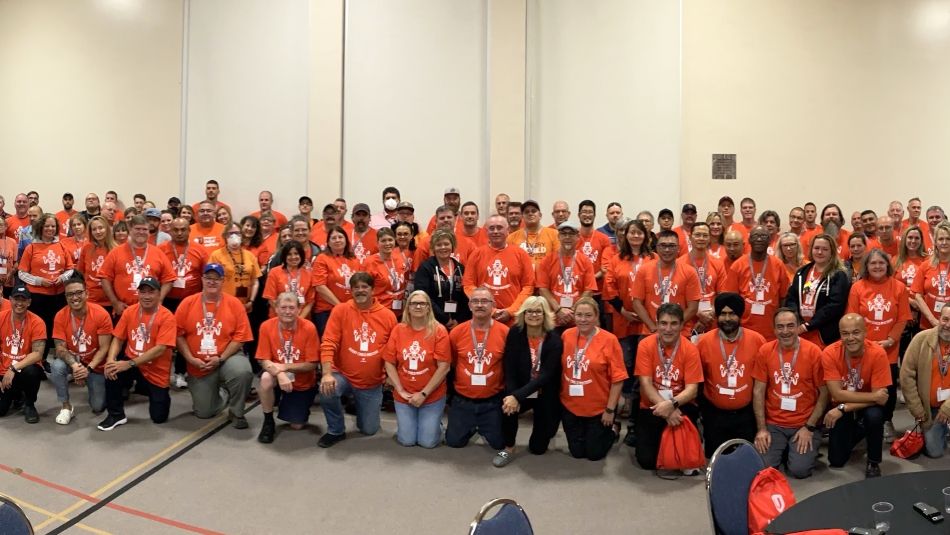
Share
More than 150 health and safety representatives and leaders gathered at Unifor’s Family Education Centre in Port Elgin, Ont., for the 2022 Health and Safety Conference. Held biannually, this was the union’s first in-person health and safety conference in four years, but in that time, the pandemic meant the national union and local leaders were more occupied with health and safety issues than ever before.
“Covid-19 presented workers with immense challenges and everyone’s circumstances were different, so the pandemic pulled health and safety activists to the forefront,” said Vinay Sharma, Unifor Director of Health and Safety. “It was important to regroup to share what we’ve learned and figure out what policies and actions will continue to improve workers’ lives in this new world we’re living in.”
The conference began with a panel of health and safety activists from a variety of Unifor sectors and workplaces across the country. Former Director of the Health, Safety and Environment Department Sari Sairanen moderated the panel and recognized how difficult the discussion may be for some.
“Looking at mental health across the country – the pandemic was a trigger,” said Sairanen. “Many of you were front-line workers – whether in retail and warehousing or in auto plants and health care - figuring out how to adapt. There wasn’t a single sector where workers’ lives weren’t upended.”
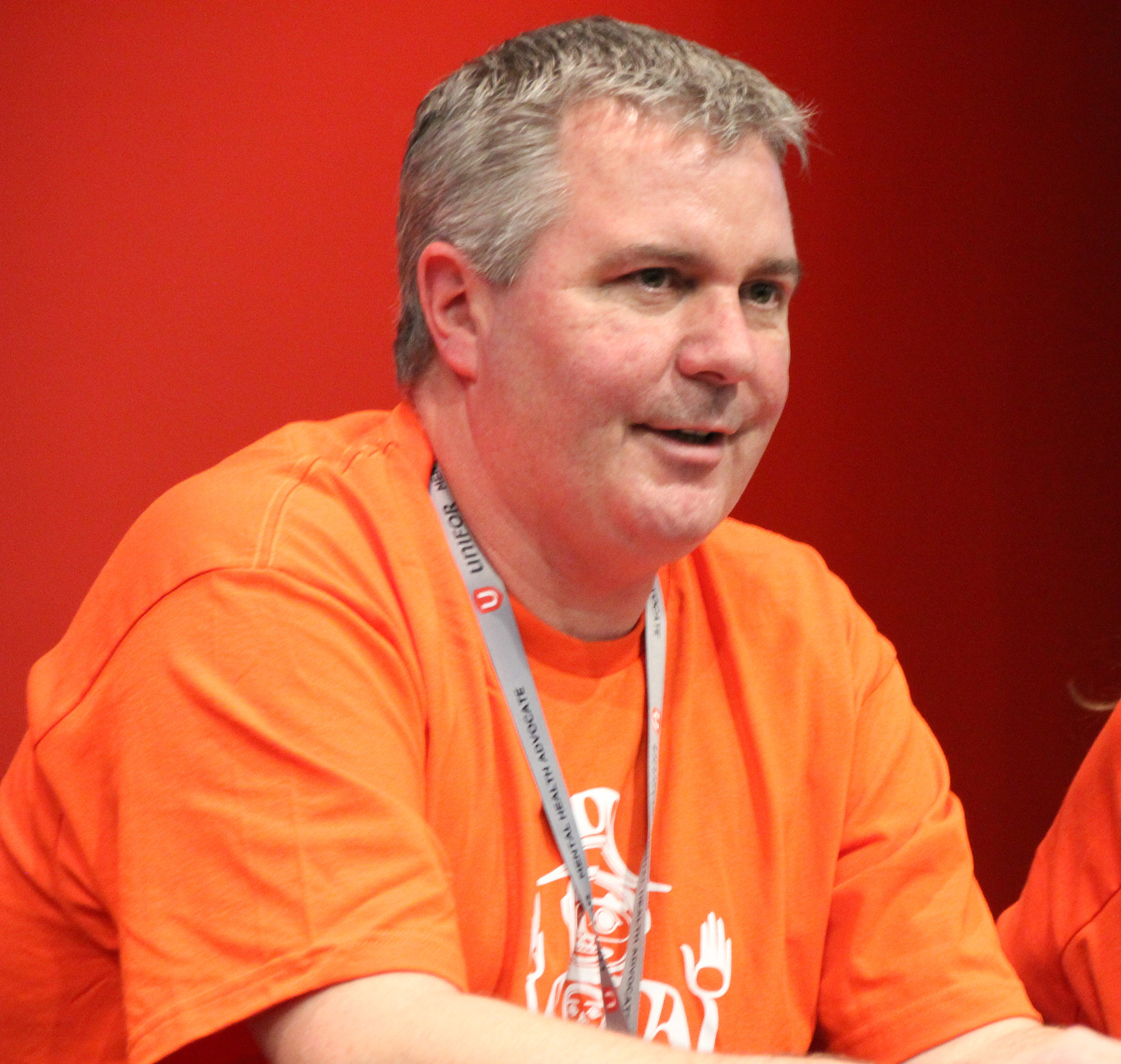
What I learned is that when the company wants to do something, they can. I asked for handwashing stations so many times, but it took a pandemic and all of a sudden they put them wherever we asked.
“It was quite a time – I’ve repressed most of those memories,” said John Mullin, H&S representative at Ford Canada. “What I learned is that when the company wants to do something, they can. I asked for handwashing stations so many times, but it took a pandemic and all of a sudden they put them wherever we asked.” He added, “I work with 4,000 people, and it was a really difficult time, but I’m glad we got through it.”
We all lost our jobs in a week – there was no CERB, nothing to support our members at that time.
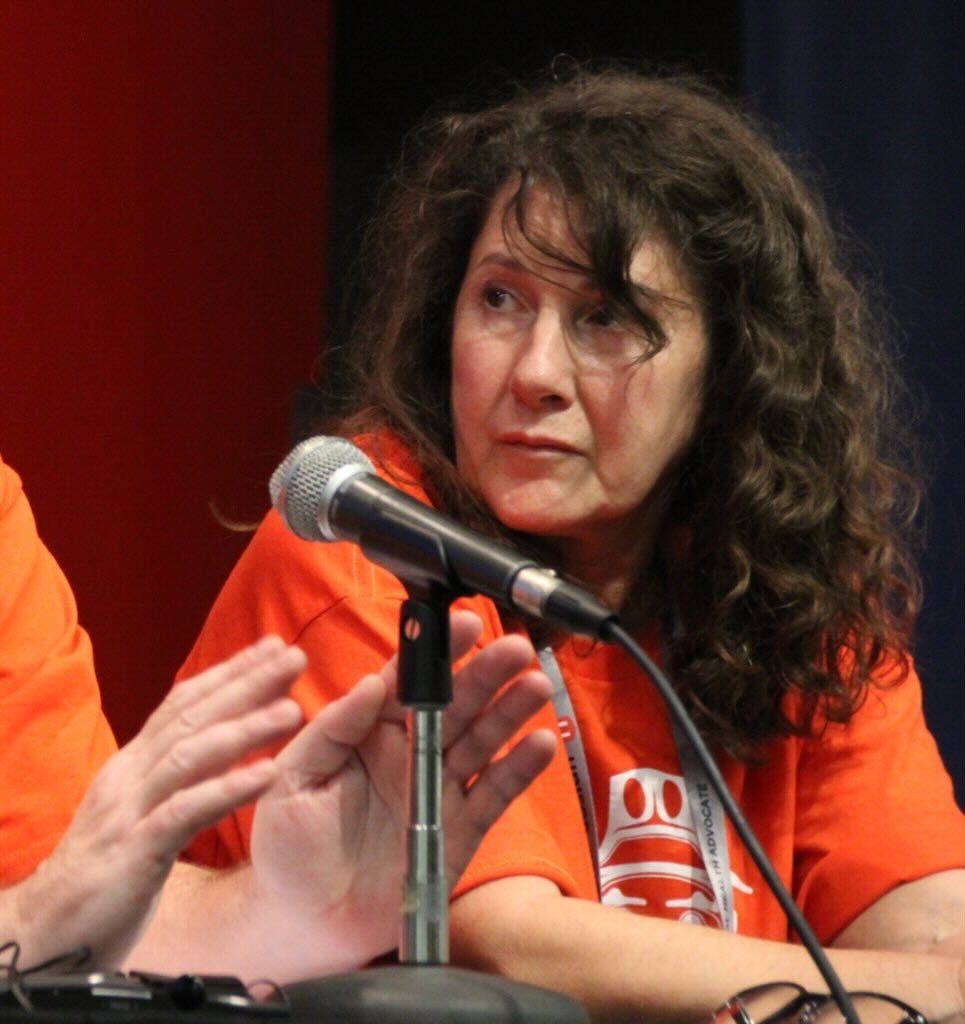
Workers in hospitality and gaming were hit in a different way, where instead of having to find ways to work amid the pandemic, their workplaces were largely shut down.
“We all lost our jobs in a week – there was no CERB, nothing to support our members at that time,” said Della Rogers, representative at the Delta Regina. “Our members had no idea how to apply for EI so we had to print the Unifor guides for how to apply and then I had to hand-mail them to each member.”
In one of the most emotional reports, ORNGE paramedic Peter Zanon shared traumatic and impactful experiences as a front-line health care worker in the early days of the pandemic.
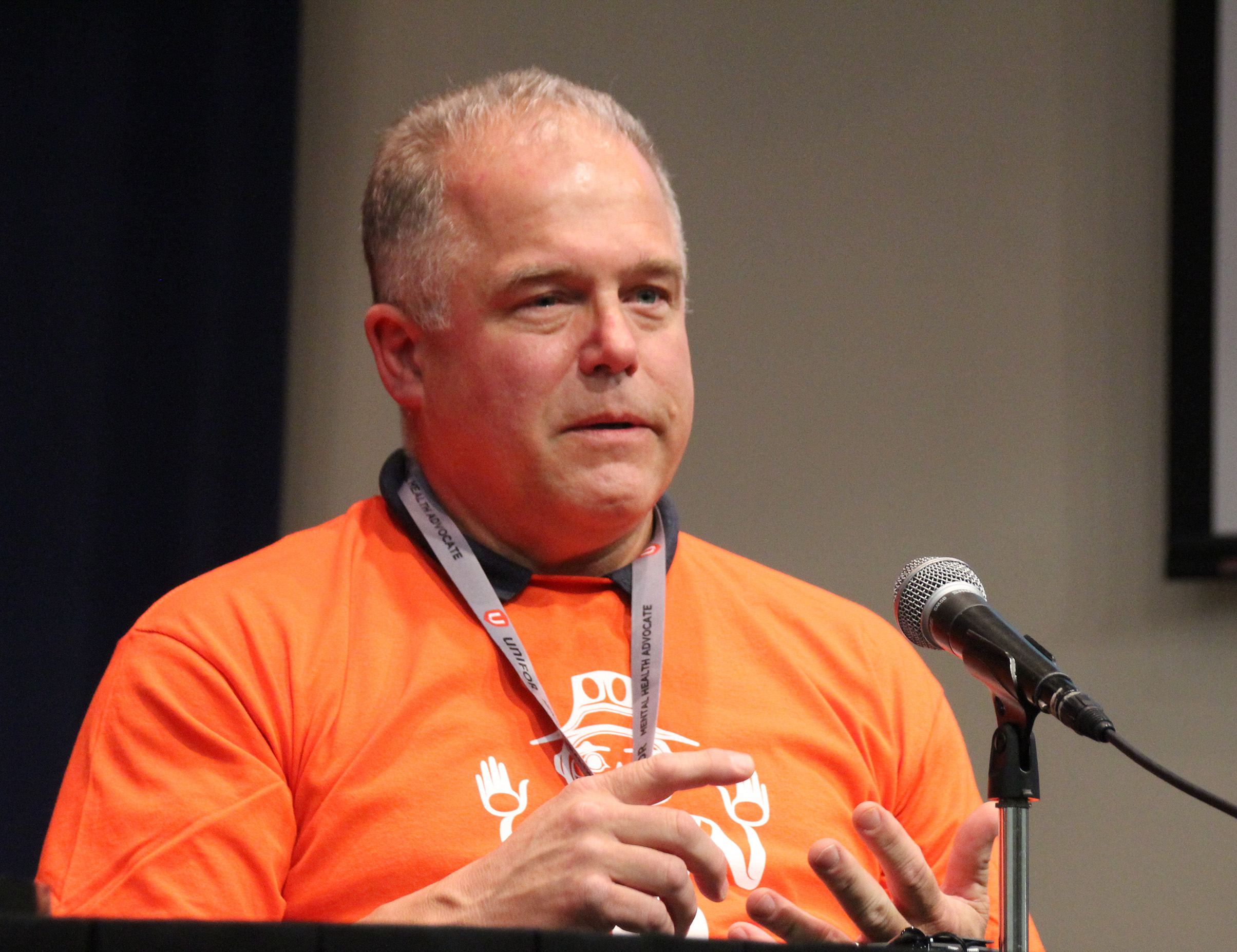
ORNGE transported more than 13,000 patients over the last two years, and the most severe were in the early days.
“ORNGE transported more than 13,000 patients over the last two years, and the most severe were in the early days,” said Zanon.
The challenges he and other paramedics faced included new levels of PPE, the fear and risk of coming into contact with Covid-positive patients and the worry of bringing the virus home to family at the end of the day.
Fear was a consistent theme facing workers. For call centre workers, who are used to working elbow-to-elbow in busy rooms, there were concerns about their safety at work. In some centres, like the one Sylvie Schmitt works in with Air Canada, the employer selected some members to work from home in order to create space between workers. However, that posed its own challenges.
“In our job, everything you do is recorded and timed and tallied,” said Schmitt. “If your metrics weren’t stellar, you wouldn’t get chosen to work from home, and for some members with particular health concerns or other worries, this was a real challenge.”
In our job, everything you do is recorded and timed and tallied. If your metrics weren’t stellar, you wouldn’t get chosen to work from home, and for some members with particular health concerns or other worries, this was a real challenge.
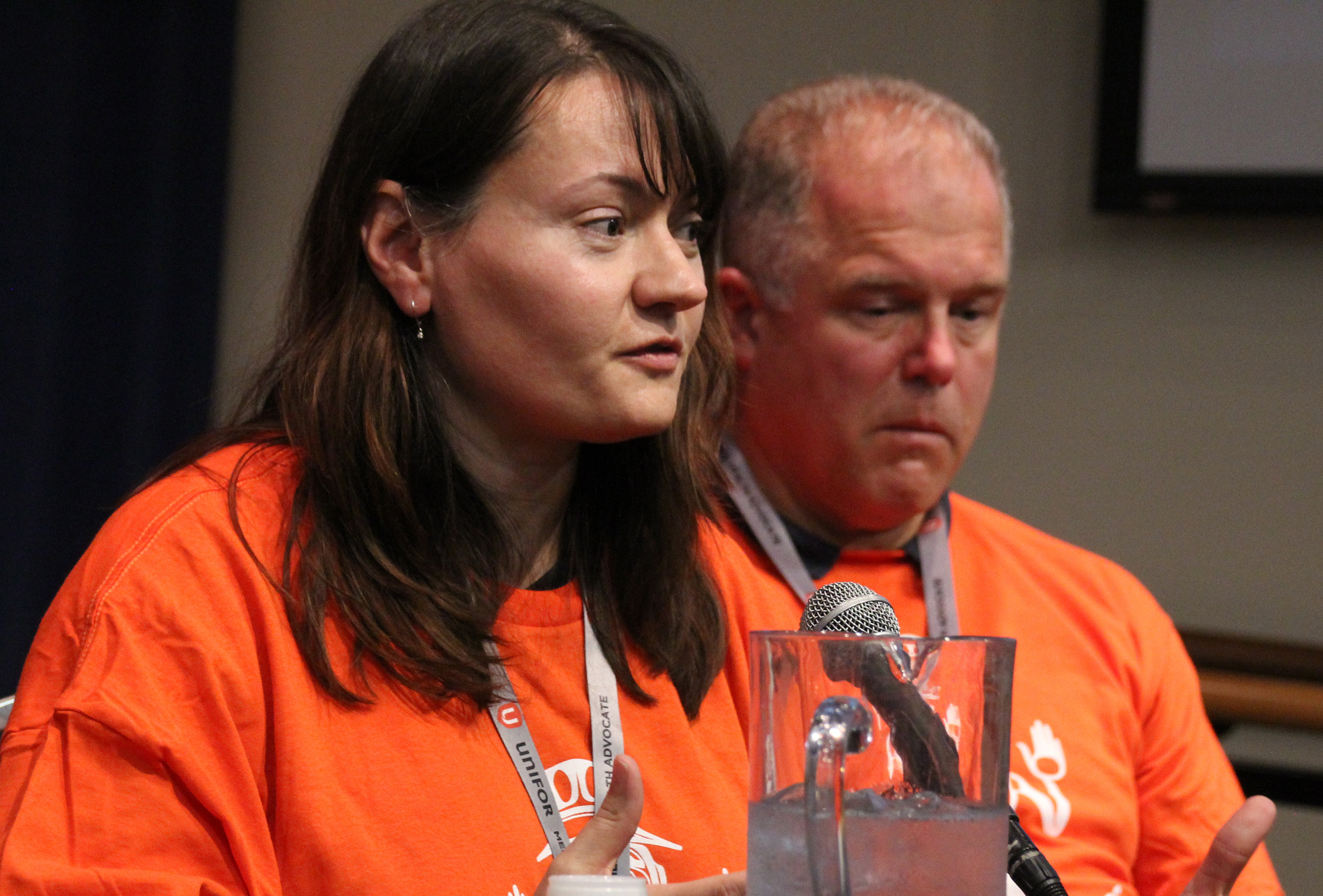
And of course, the health and safety concerns have not been limited to those surrounding Covid-19. The pandemic did not stop the risks workers face on a daily basis. Earlier this year, a tragic workplace accident resulted in a Unifor member falling six feet, suffering a head injury, and dying two days later in hospital.
“When I set foot on the worksite, the atmosphere was indescribable,” said David Abran, representative from CP Rail. “This worker had 25 years’ experience and was well-known. It’s been really hard on the members and they think about it every day.”
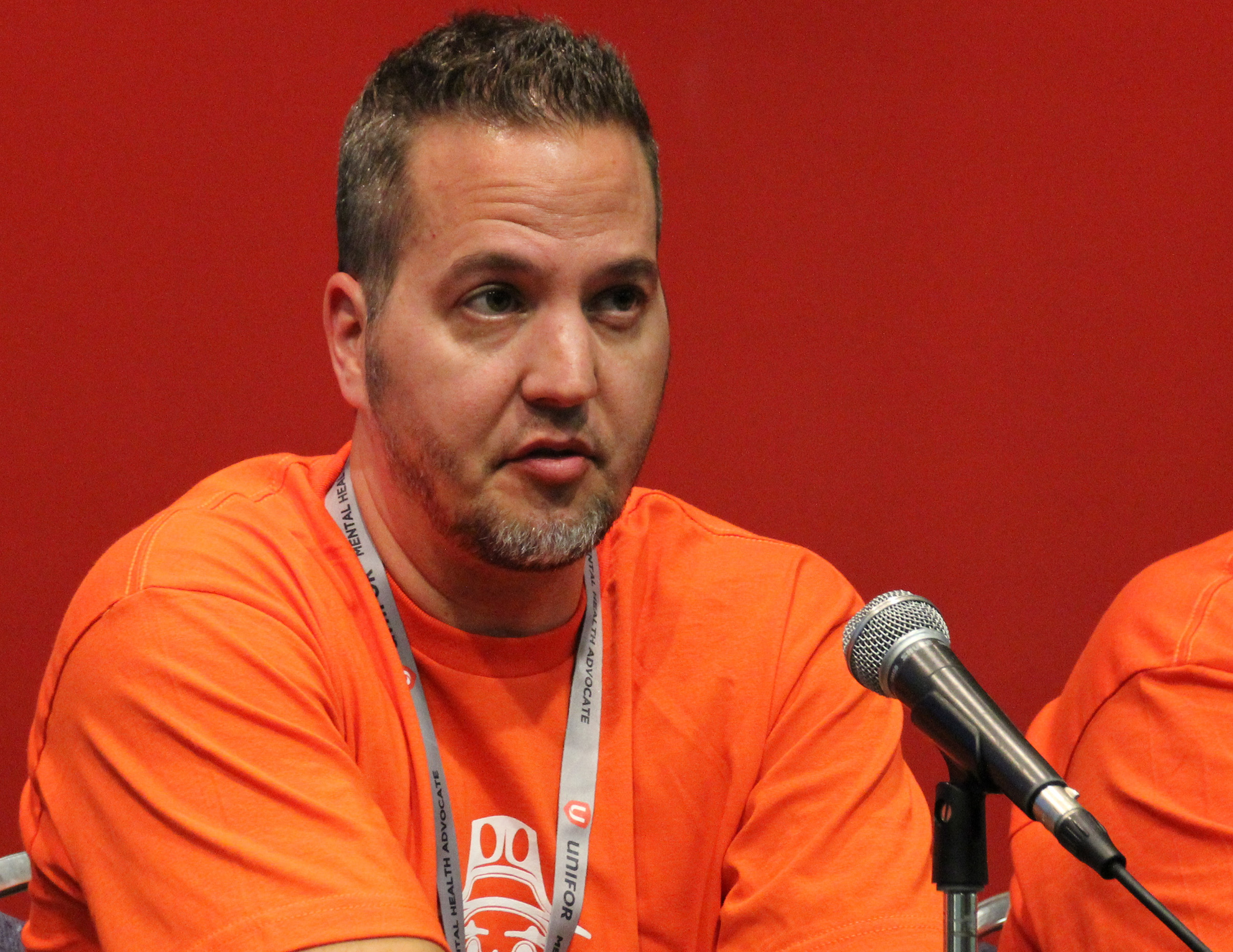
This worker had 25 years’ experience and was well-known. It’s been really hard on the members and they think about it every day.
Health and safety activists also watch for long-term and systemic issues that pose serious risks to workers. Health and Safety Representative and the 2022 Bud Jimmerfield Award-winner Marc Roussel spoke about his victory over his paper mill employer in New Brunswick over asbestos.
“This victory led to an even better improvement in our workplace where several of the management team who made those decisions are now gone,” said Roussel. “We won that tribunal, things are better in our workplace now, and management doesn’t begin a job now without calling me and the health and safety committee.”
We won that tribunal, things are better in our workplace now, and management doesn’t begin a job now without calling me and the health and safety committee.
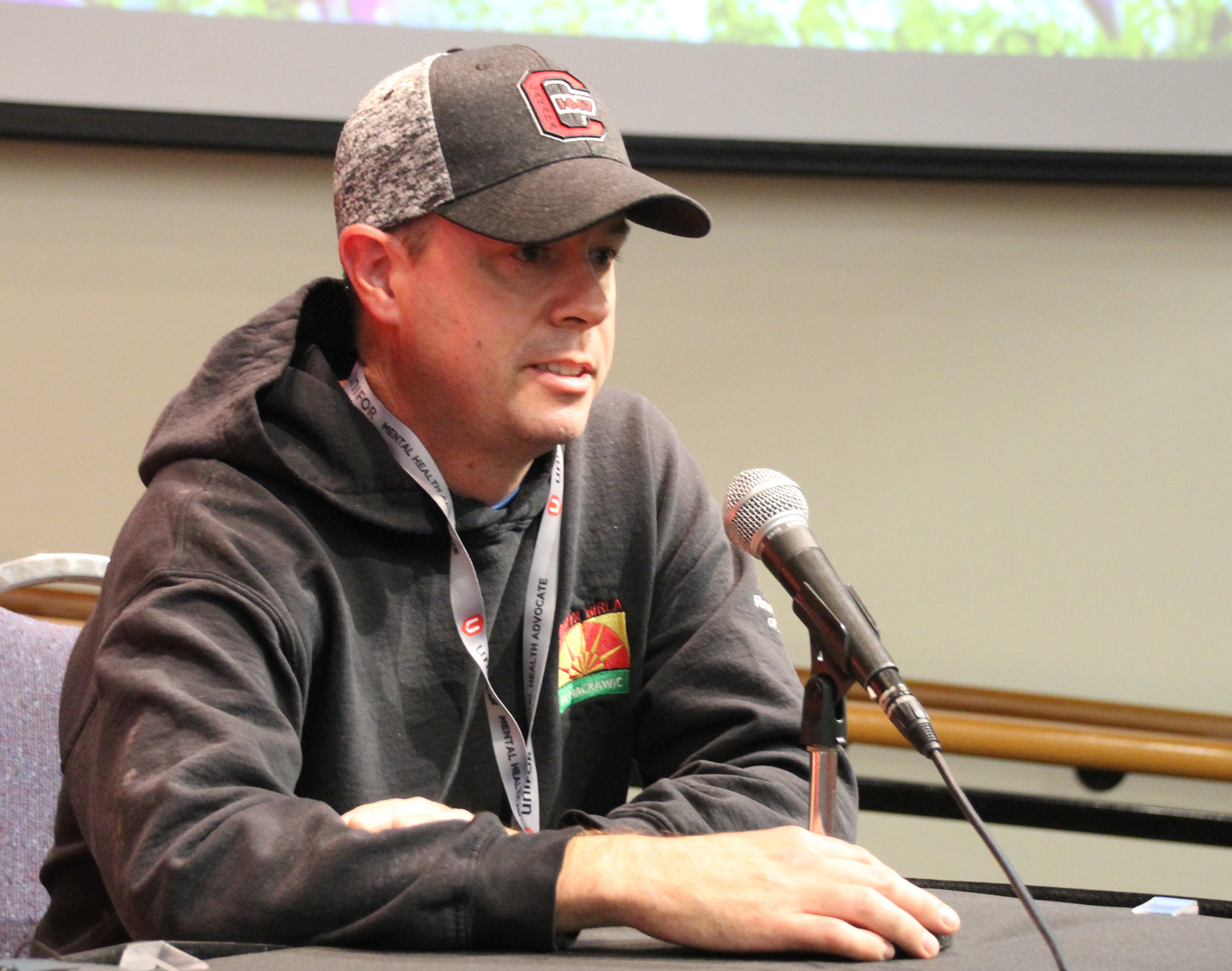
The conference allowed delegates a choice of four workshop options: Stress and anxiety in the workplace; Psychological Injury - prevention, retention and return to work strategies; Peer support; or, Mental health.
National President Lana Payne spoke to delegates on the final day, driving home hers and the union leadership’s commitment to supporting health and safety initiatives, including mental health supports.
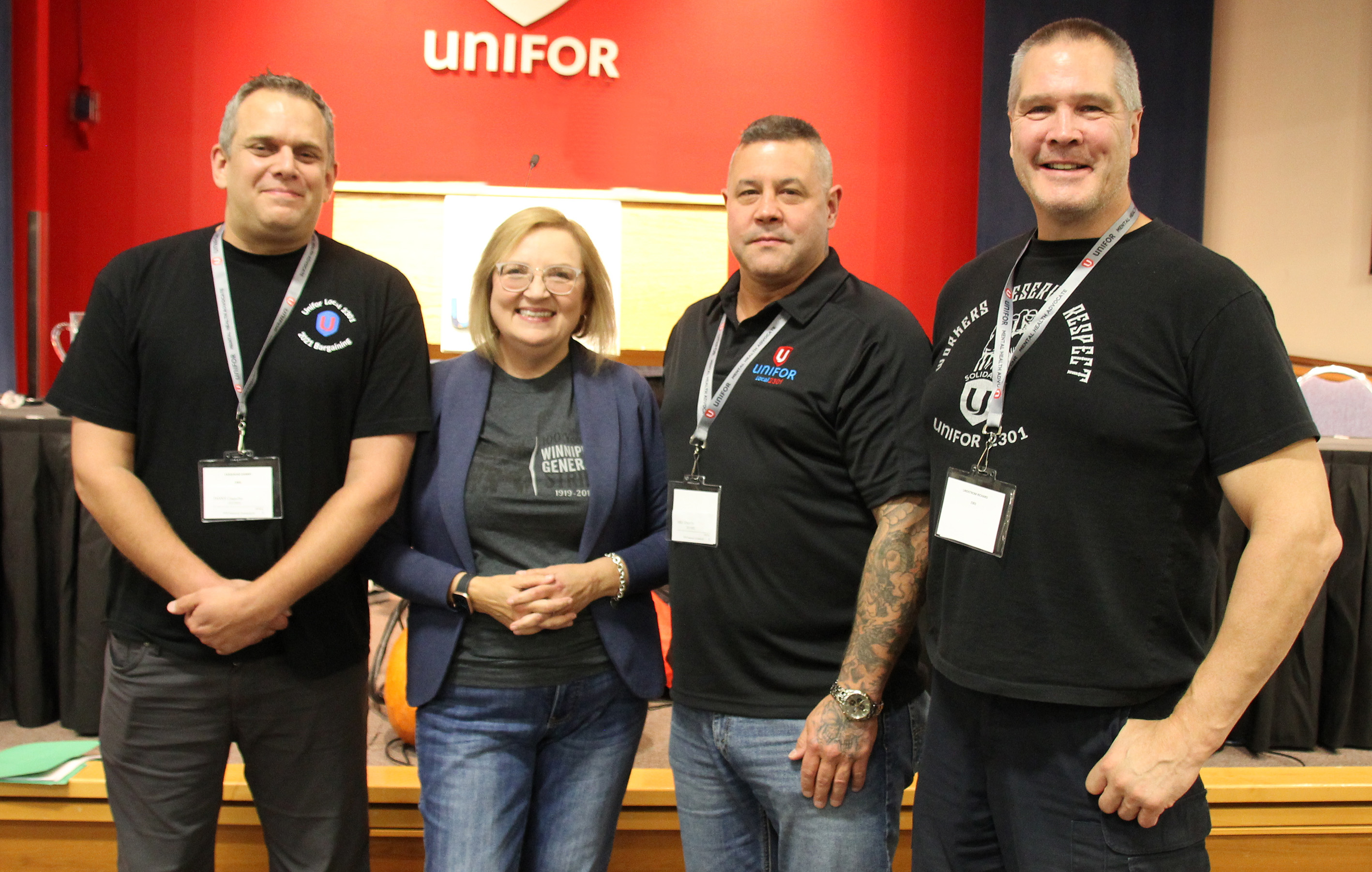
Since this pandemic began, 45,400 Canadians and counting have died from this virus and tens of thousands are living with long Covid. It has made so many things worse, including our mental health.
“Mental health and addiction are not an individual problem,” said Payne. “How many workers in your own workplaces, for example, are one paycheque away from not being able to pay their rent?”
She encouraged health and safety activists to remain vigilant in their work.
“This virus is still with us. It’s still in our communities and workplaces,” said Payne. “Since this pandemic began, 45,400 Canadians and counting have died from this virus and tens of thousands are living with long Covid. It has made so many things worse, including our mental health.”
Supporting her comments, Quebec Director Daniel Cloutier reminded members to look for root causes of mental health strains in the workplace.
This work is vital and I thank you all for taking it on.

“The very structure of how we work impacts our mental health,” said Cloutier. “More than just having EFAP in place, we must challenge how we work in order to protect our mental health. This work is vital and I thank you all for taking it on.”
To learn more about health and safety courses available and to access other resources and supports, contact Unifor Director of Health, Safety and Environment Vinay Sharma at @email or visit the department’s resource page at unifor.org/healthandsafety.


